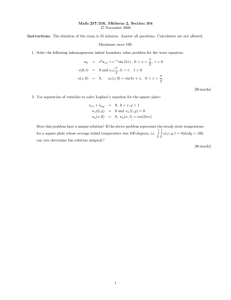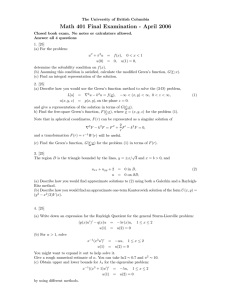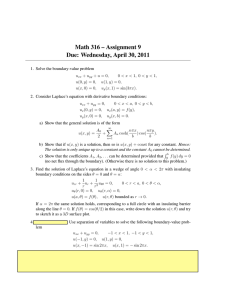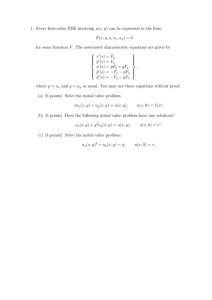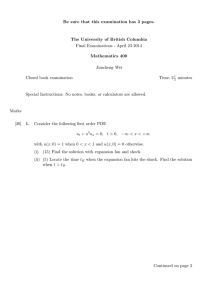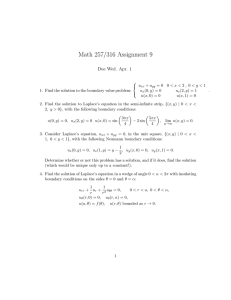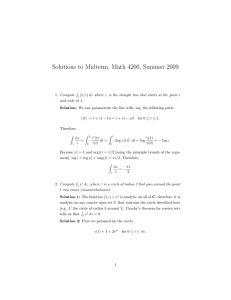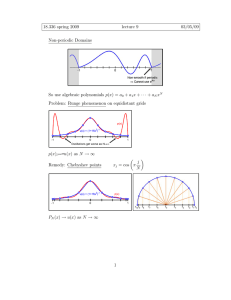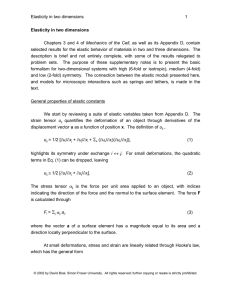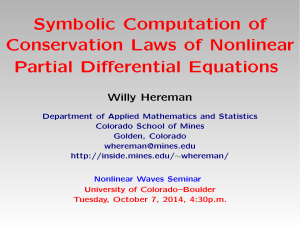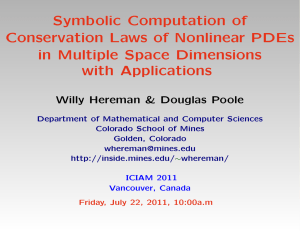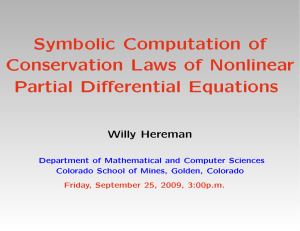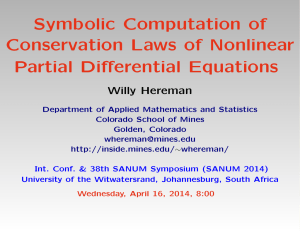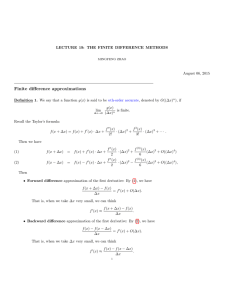Assignment 5
advertisement
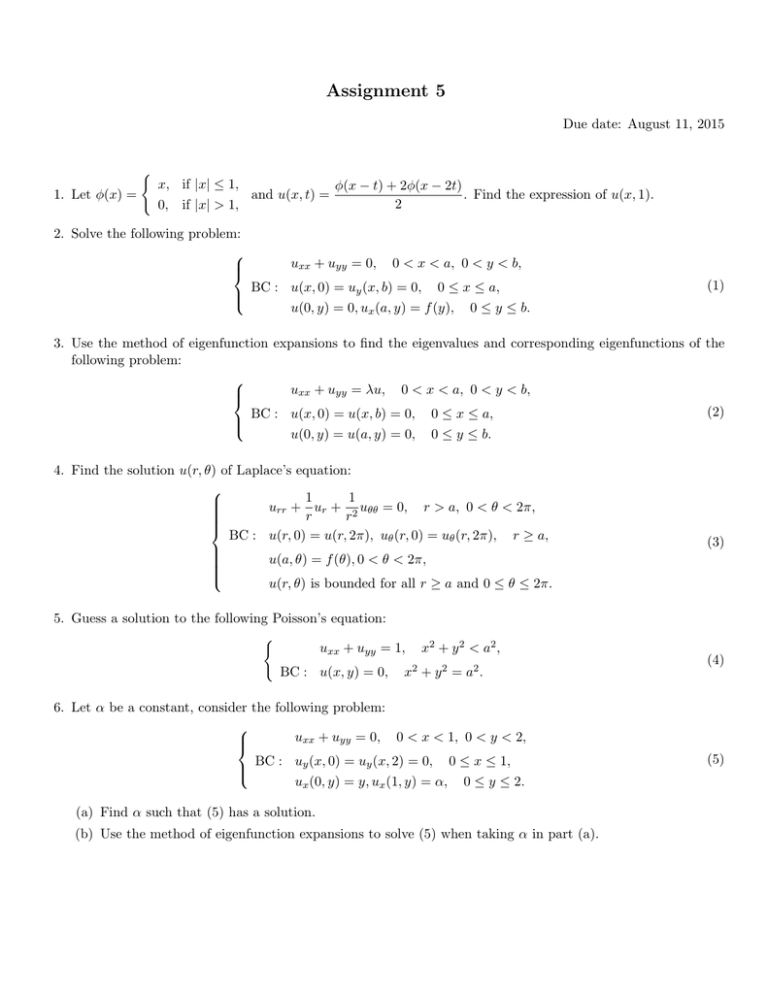
Assignment 5 Due date: August 11, 2015 ( 1. Let φ(x) = x, if |x| ≤ 1, 0, if |x| > 1, 2. Solve the following problem: and u(x, t) = φ(x − t) + 2φ(x − 2t) . Find the expression of u(x, 1). 2 uxx + uyy = 0, 0 < x < a, 0 < y < b, BC : u(x, 0) = uy (x, b) = 0, 0 ≤ x ≤ a, u(0, y) = 0, ux (a, y) = f (y), (1) 0 ≤ y ≤ b. 3. Use the method of eigenfunction expansions to find the eigenvalues and corresponding eigenfunctions of the following problem: uxx + uyy = λu, 0 < x < a, 0 < y < b, (2) BC : u(x, 0) = u(x, b) = 0, 0 ≤ x ≤ a, u(0, y) = u(a, y) = 0, 0 ≤ y ≤ b. 4. Find the solution u(r, θ) of Laplace’s equation: 1 1 urr + ur + 2 uθθ = 0, r > a, 0 < θ < 2π, r r BC : u(r, 0) = u(r, 2π), uθ (r, 0) = uθ (r, 2π), r ≥ a, u(a, θ) = f (θ), 0 < θ < 2π, u(r, θ) is bounded for all r ≥ a and 0 ≤ θ ≤ 2π. 5. Guess a solution to the following Poisson’s equation: ( uxx + uyy = 1, BC : u(x, y) = 0, x2 + y 2 < a2 , x2 + y 2 = a2 . 6. Let α be a constant, consider the following problem: uxx + uyy = 0, 0 < x < 1, 0 < y < 2, BC : uy (x, 0) = uy (x, 2) = 0, 0 ≤ x ≤ 1, ux (0, y) = y, ux (1, y) = α, 0 ≤ y ≤ 2. (a) Find α such that (5) has a solution. (b) Use the method of eigenfunction expansions to solve (5) when taking α in part (a). (3) (4) (5) 7. For the following problem: ut = uxx + ex , 0 < x < 1, t > 0, BC : u(0, t) = 0, u(1, t) = 1, t > 0, IC : u(x, 0) = f (x), 0 ≤ x ≤ 1. Briefly describe how you would use the method of finite differences to find an approximate solution to this problem. Use the notation ukn = u(xn , tk ) to denote the values of u on the finite difference mesh, and include how you propose to incorporate the boundary and initial conditions. 8. For the following problem: where utt = uxx , −1 < x < 1, t > 0, BC : ux (−1, t) = ux (1, t) = 0, IC : t > 0, u(x, 0) = f (x), ut (x, 0) = 0, −1 ≤ x ≤ 1. 2(1 + x), if −1 < x < − 21 , 1, if − 12 ≤ x ≤ 12 , f (x) = 2(1 − x), if 21 < x < 1. Briefly describe how you would use the method of finite differences to find an approximate solution to this problem. Use the notation ukn = u(xn , tk ) to denote the values of u on the finite difference mesh, and include how you propose to incorporate the boundary and initial conditions. Page 2
